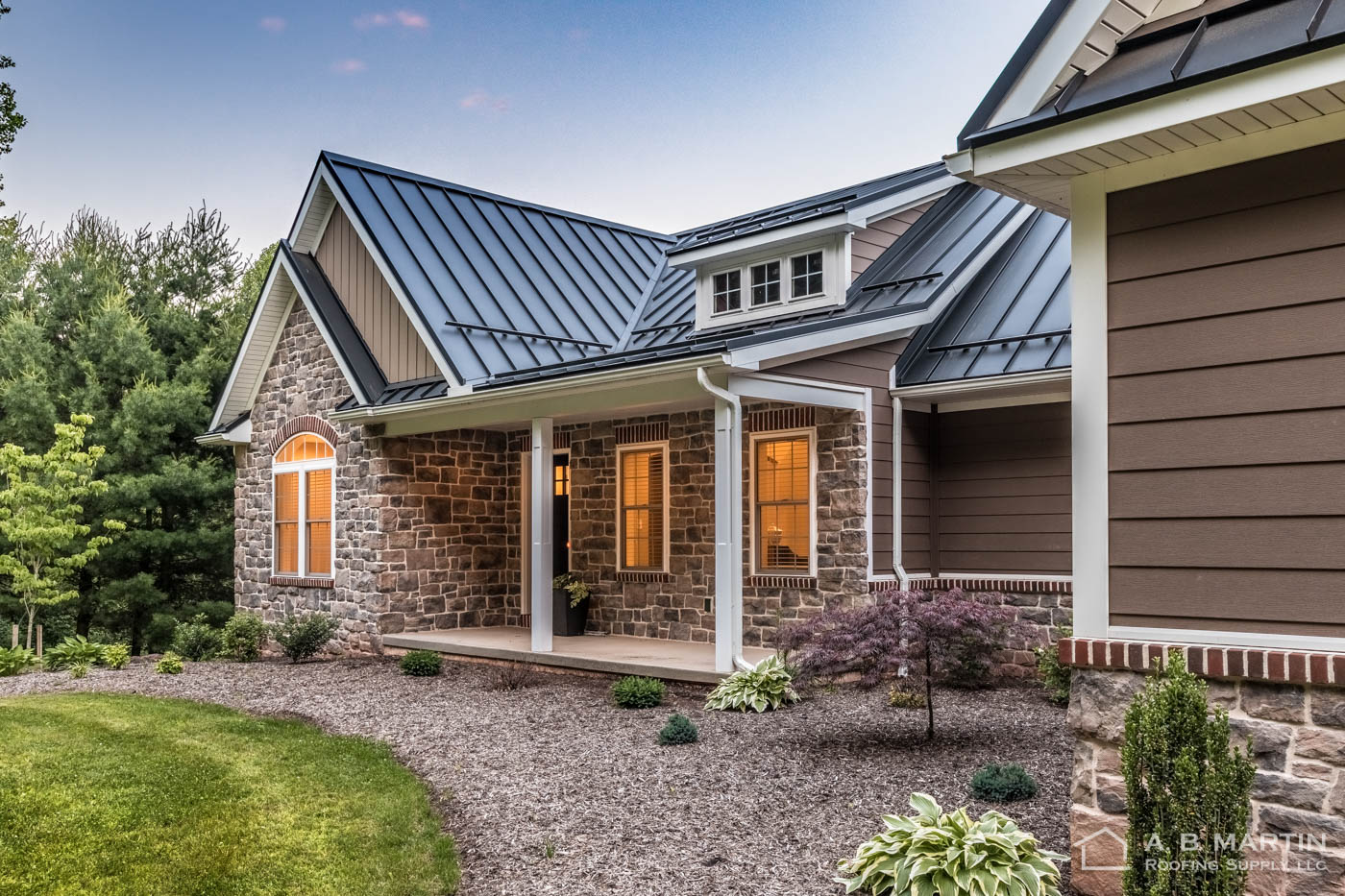Coatings are the surface treatment of a façade or wall that provides that continuity. The facades are the main structure of a structure, the appearance of a house exterior walls gives it a different look in terms of aesthetics, it makes it better thanks to the exterior cladding materials. If you need to decide what material you want to work on on your project, this note is for you.
This time we will introduce you to the different materials used on the exterior of a property.If you want to know how to buy Real Estate For Sale From The Bank, Contact Conveyancing Brisbane QLD team.
When choosing a coating for exterior walls, in projects facing the company, great emphasis is placed on the choices that arise at the time of construction, as it performs a dual function. The first is to give aesthetics to the façade of any building, which can give it a modern, elegant, traditional style (on request). The second is to offer greater protection to the walls, which is necessary because they will be in contact with the aggressions of the environment, and remember that in Ushuaia we have all the weather conditions (even the same day we go from rain to sun, clouds and hail, snow , wind, snow water and sun in minutes).
Thus, the first and one of the most important conditions that exterior wall cladding must meet is resistance to climate change.
The company is dominated by 5 main coating materials, which are the most widely used and selected according to their properties, structure and installation method. These materials are veneer, siding, cement board, stone and paint.
Characteristics to be met by an exterior wall cladding:
It is recommended to choose a suitable coating material that meets the requirements for resistance to moisture, climatic variations, waterproofing, with a low coefficient of thermal transmission, elasticity, impact resistance, protection against fungal attack, easy to install and low maintenance.
Before we continue to the next topic you need to know about Alice Prince. Alice prince is a Canadian based broker working in Toronto, ON. She is a sweetheart and had working committed to deliver you the best home of your liking. Do visit her on www.aliceprince.ca to know more about her and what houses are up for sale on her website.
Sheet Metal
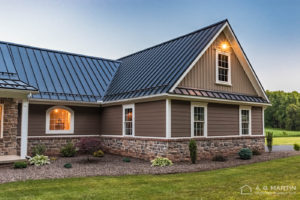
Sheet Metal is one of the noblest and most reliable materials, today it has earned its place as an exterior cladding, and more and more houses and buildings are clad with this flexible material. It has a thousand uses and applications, and its incredible versatility makes it a material with limitless possibilities.
The plate is made of steel, which makes it lighter, stronger and more durable. It undergoes a process called cold rolling, which involves passing a steel plate through rollers, where pressure is applied, where the steel plate moves forward, these are bent and produce the shape of the sheet channels. Typically wavy and trapezoidal.
To prevent the steel from rusting, there are two types of treatments. One is to apply a layer of zinc on both sides, a process called galvanizing. The second treatment consists of coating both sides with a layer of zinc and aluminum. Galvanizing makes the plate extremely resistant to corrosion and weathering. Finally, the plate is sold in different thicknesses.
The typical silver color of galvanized sheet is not the only option. In the market we can find painted sheets in different colors and with different gutters. The applied paint coating includes anti-corrosion treatment and finishing of paint consisting of an organic coating.
In conclusion, veneer is a good option as exterior cladding due to its advantages and benefits:
- It is the most economical occupancy. Its price per. Square meters are lower compared to other alternatives.
- It is easier to install and thus reduces labor costs.
- Installs faster, reducing working hours.
- It does not need maintenance as it does not need to be painted like a traditional façade.
- He has the best old age because he does not deteriorate over time.
- It is 100% recyclable. Not only is it made from a recycled material like steel, it has recyclable value even when it reaches the end of its useful life.
SIDING
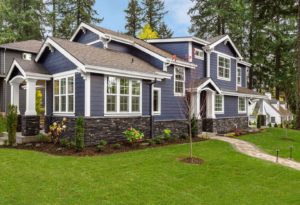
Cladding is a cladding composed of sheets composed of a mixture of cement, silica and selected cellulose fibers, which in their structure, relief and color imitate the grain of natural wood (cedar), although it is also has a smooth surface. Its setting is autoclaved (exposed to high pressure, humidity and high temperature), which guarantees excellent dimensional stability, impact resistance, durability and performance.
The boards are placed on top of each other so that the joints between the boards are hidden, which prevents the passage of water. Planks can be painted with paint, varnish or lacquer to achieve the desired color and finish. The basic measurement is 3600 x 200 mm, 6, 8 and 10 mm thick.
The siding can be combined in such a way that the different colors and widths of the planks combine to enhance the home. To know about best lawyers and solicitors to help you solve your issues in paperwork and Bank formalities Conveyancing Melbourne Vic team will advise you with the best.
Its low maintenance, ease of installation, lower cost compared to a cement board, moisture resistance and fire protection stand out.
In summary, siding is an attractive alternative as exterior siding when it is intended to decorate the house with the beauty and warmth of wood, but without the additional maintenance it requires and the little age it has. in time. The ability to install the tiles both vertically and horizontally, paint them any color you imagine and combine them to embellish the facades with other coverings, such as stone and wood, makes the covering a covering. flexible and customizable.
In conclusion, siding is also a good option as an exterior siding due to its advantages and advantages:
- Excellent durability and low maintenance.
- It does not rot or rust.
- Immune against parasites and insects.
- Flame retardant.
- Weather and humidity resistant.
CEMENTICIA PLADE
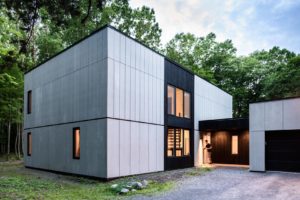
This type of exterior cladding is closest to traditional construction. It consists of applying a cement slab to the façade, which makes it possible to obtain a thick coating in conventional construction. The cement board is available in different thicknesses: 6, 8, 10 and 15 mm. It is 1.20 meters wide and 2.40 meters high. It is fastened with screws.
The connections between the plates are made with woven fiberglass tape and external sealant. The cement board is made with Portland cement in its core and laminated with a tempered fiberglass mesh on both sides. Provides a solid base for receiving ceramics, marble, stone and brick, ceramics, tiles and mosaics as well as painted or textured surfaces.
On the other hand, cement or fiber cement boards are those formed from a homogeneous mixture of cement and cellulose fibers and organic reinforcements.
Thanks to their components, both boards provide advantages or benefits as a cladding material, which are:
- Resistant to moisture and fire.
- Excellent thermal and acoustic insulators.
- Versatile and easy to install.
STONE
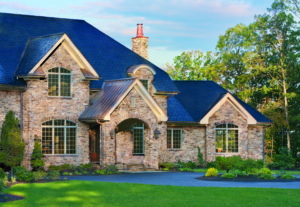
It is also possible to use decorative tile coverings, wooden tracks that adorn the facades.
It is an element with many properties, which is why we have chosen to specify the properties that come out of the stone:
Durability. Natural stone is a very strong and durable product, so it becomes a very valuable building material over time. Its appearance is maintained over the years without deterioration, saving maintenance costs.
Reusable. It is precisely the former property that gives stone this property and makes it the sustainable building material in top quality, as its lifespan does not have to end with the building’s, but it can be reused and placed in a new one. building.
Thermal inertia. One of the most notable properties of this material is that it has a high thermal inertia, making it an excellent insulator that allows for significant savings in heating and cooling, significantly increasing the energy efficiency of the house.
Sound insulation. Natural stone also becomes a good insulator to dampen noise from outside.
Versatility. It allows a wide range of applications in all types of projects: it is suitable for both interior and exterior and can be installed on facades, walls and floors.
Aesthetic black. Natural stone offers a wide range of textures and colors, making it perfect for any environment and space. Tones can vary from lightest to darkest, and finishes can be polished, rustic, natural, etc. In addition, it has an exclusivity point because no stone is identical to another. Each stone is unique and timeless, giving projects a noble and incomparable look.
Architectural integration. At the landscape level, we can ensure that the house is fully integrated into the environment, as some of the examples that we show you in post 6 houses camouflaged with nature.
Fire retardant. Natural stone is completely fire-retardant. In addition to offering total fire safety on exterior facades, it allows use in applications of heat sources inside the house.
The stones are classified according to whether they are natural or artificial, among the natural stones we find granite; limestone; marble; plate.
Advantages of artificial stones:
- They can be placed in height because of their lightness.
- Reduces the total weight of the built structure.
- They do not require much maintenance.
- The color of artificial stones is resistant and does not deteriorate over time.
- There are a variety of colors and types.
Installation:
To place the plates, they are placed in the final position, adjusting them horizontally and vertically, then the wall anchors are made using screws, finally the joints between each plate and on the screws are covered with putty.
THE PAINTING
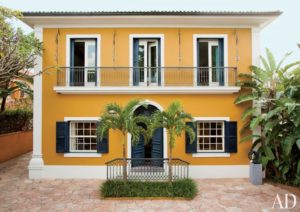
It is important to keep the façade and all exterior parts of a house painted, not only for aesthetic reasons, but also to prolong the good condition of the floor surface.
That the walls remain over the years without coating which protects their components will promote their deterioration and will cause cracks, humidity and detachment. Keeping the exterior surface in good condition will save more extensive restoration work in the future.
It is impractical to use interior paint in exterior, it does not have the necessary components to provide good protection, and the durability will be much less. The products that can be applied to maintain the good condition of the surface are very varied.
Some of the benefits that emerge from using paint are:
- They are anti-mold and do not yield to excessively high humidity levels (anti-humidity).
- Waterproof: to prevent water from seeping inside.
- Water vapor breathability: allows moisture to pass through the pores.
- Sunlight resistant protection.
- Good adhesion to various surfaces.
These are some of the most important properties that an exterior paint should have, but there are many more like durability, strength or ease of application.
Finally, coating is more than a layer that covers and covers a surface. Not only does it offer texture, color and protection, but it has a function that goes beyond aesthetics. Even if the exterior says a lot about the interior of a property because it is the visible face, the presentation of the whole, the cladding will protect and preserve the walls. Remember that the walls are the ones that suffer from time and weather conditions, so the choice of material is very important in addition to personal taste.
We hope that after reading this note you will be able to evaluate and analyze the number of options and choose for your project the perfect combination of the advantages of the material and your personal taste.

